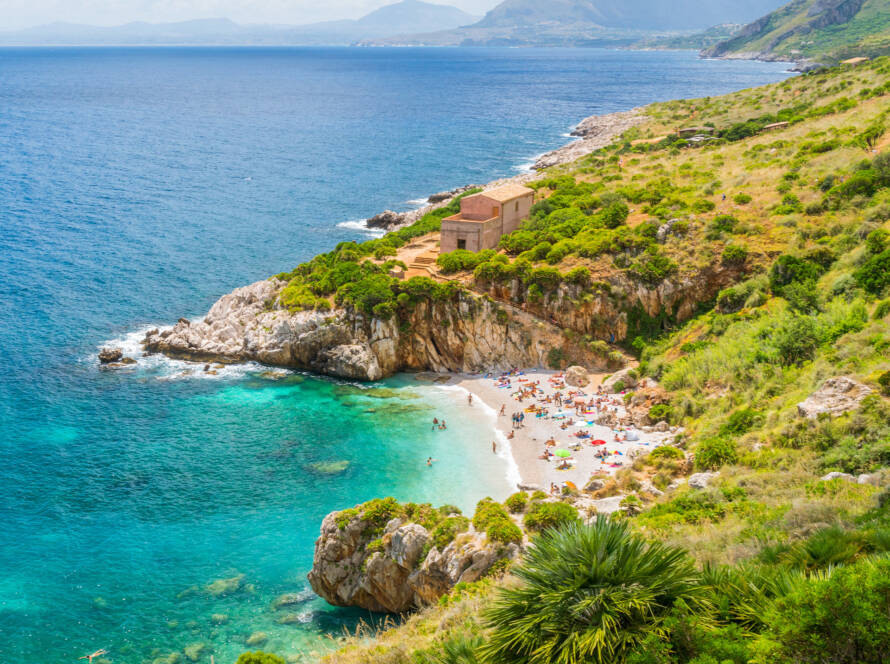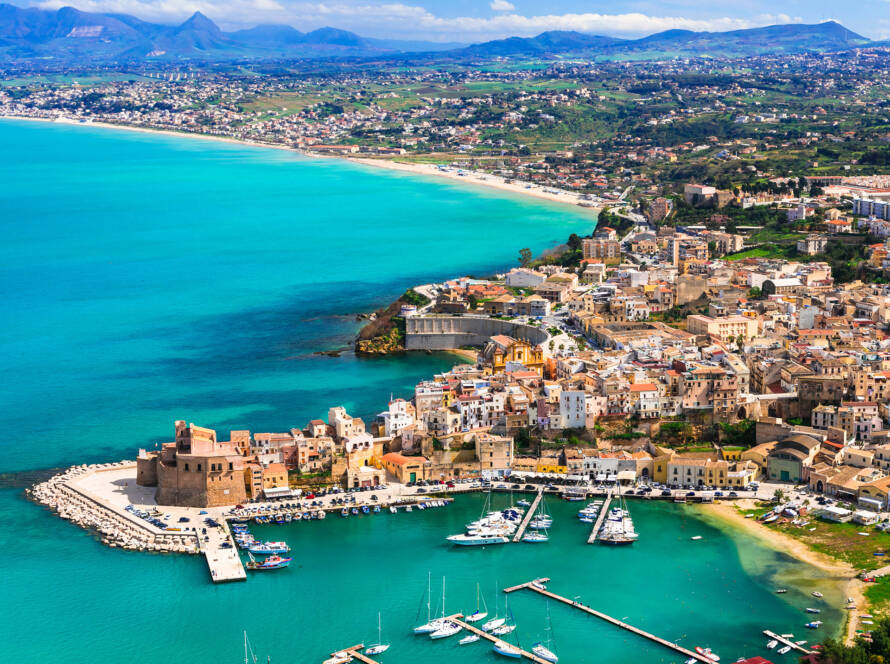Date
planning
Departures and stops
Gratteri, Cefalù
Duration
one day
Cost
to define
The heart of Palermo’s multi-ethnicity handed down through the centuries
Our tour discovering ancient multi-ethnic Palermo will take you through the most picturesque streets and most evocative places in the province, the same places that have marked Palermo’s history and that continue to amaze tourists and Sicilians, who will never get used to the splendour of the capital.
Dettagli del programma:
Departure from at: planning
Lunch: planning
Return at: planning
The tour includes:
Our tour will begin at Piazza Stazione, known as ‘Piazza Giulio Cesare‘, dominated by the imposing station building, which combines neoclassical and Art Nouveau elements in its design. In the centre of the square stands an equestrian statue of Vittorio Emanuele, the ‘Father of the Homeland’, and going straight ahead, in front of the station, we will find the monumental entrance to Via Roma, while to the left of the building we will have Via Maqueda.
So we continue along Via Maqueda, the long avenue that branches off from Piazza Giulio Cesare to Piazza Verdi, where the Teatro Massimo is located. The importance of Via Maqueda is fundamental not only because it skirts the key places of interest for city tourism, such as Ballarò market, Piazza Pretoria and Piazza Verdi, but above all because it represents the heart of the multi-ethnicity of the area, thanks to the very large presence of populations from Africa, Sri Lanka and Bangladesh, who bear witness to their presence through the mosque in Via Giosafat and the numerous family-run food shops. The street also branches off onto a wonderful octagonal square, called ‘I Quattro Canti’, which is the centre of Baroque Palermo.
Via Maqueda, as previously mentioned, also opens onto Piazza Pretoria, commonly referred to as the ‘Piazza della Vergogna‘ (Square of Shame), and brings together all the beauty and wonder of the Tuscan Renaissance, as well as being one of the most beautiful fountains in Italy. The concentric rings that make up the fountain are divided by pools of water with steps that act as bridges and marble parapets, while in the centre rises a stem of three basins one above the other. The square is magical and majestic in its wonder, full of historic buildings and folklore of Palermo.
We will then proceed to Piazza Bellini, home to the Church of Santa Caterina d’Alessandria, which has always been a focal point for Palermo’s religious life and representative of Italian Baroque in Palermo. The church was initially used as a conservatory to house ‘repentant sinners’, but in the first decades of the 16th century it was transformed into a regular monastery for high society maidens. In reality, the present church is the result of a decision in the second half of the 16th century by the nuns of St Catherine’s who decided to build a more imposing and opulent one, resulting in the magnificent church we admire today. In its interior, Baroque figurative culture reigns supreme and has a Latin cross layout with six chapels on the sides along the naves. The decorative work fully expresses the idea of horror vacui typical of the Baroque period, where mixed marbles and multicoloured tracery alternate.
Our journey through the Baroque will continue to La Chiesa Del Gesù, known in Palermo as ‘Casa Professa‘, which is located at the end of the Ballarò market and belongs to the Jesuit order, who built it and took care of every detail, concluding its construction in 1578. Today, Casa Professa is one of the most important monuments in the city, as well as being one of the churches with the most sumptuous and flamboyant interiors in Sicilian Baroque artistic history, in contrast to its austere façade. Inside, there is a Latin cross plan with three naves and a sumptuous decoration covers all the walls and columns of the church from head to toe. A true jewel of horror vacui as well as a priceless artistic heritage.
Obviously our lunch break can only take place in the folkloristic and typically Sicilian Ballarò market, a riot of colour, energy and tradition. Here, the rhythm of the street is dictated by the so-called ‘abbanniare’ (yelling) of the merchants who invite customers to approach their stalls. The shops wake up early in the morning, offering all kinds of foodstuffs to their customers: fish, meat, bread, olives, fruit and spices, and it almost seems as if the products are organised in order of colours and flavours. You will not be disappointed by this treat, and you will certainly leave amply satisfied!
After lunch we will explore further into the multiethnicity of Palermo, arriving at the Jewish neighbourhood of Harat al Yahud, a fascinating area that was the centre of Jewish life in the city from the 6th century until 1492. The neighbourhood offers a broad view of Jewish life at the time and contains the Municipal Historical Archives as well as the Church of St Nicholas of Tolentino, which was built on the remains of the ancient synagogue. The neighbourhood was divided into two districts, La Meschita and La Guzzetta, and the cemetery was located outside Porta di Termini, where Corso dei Mille is today. Today the neighbourhood is a cherished testimony of Jewish culture that will transport you back in time.
The penultimate stop on the tour will be the Church of San Giovanni degli Eremiti, a jewel belonging to the city’s precious Muslim artistic heritage. During Arab rule, an Arab mosque probably stood here, but over the centuries it never lost its religious function, also becoming a church and convent during the Norman period. The church is famous for its characteristic red domed roofs that make it rise high in the Palermo sky, overlooking Via Maqueda and making it iconic. A key stop in the discovery of Palermo’s multi-ethnic history.
Our tour will end at Piazza Indipendenza, one of Palermo’s central squares from which many of the most important points of interest in Palermo’s history branch off, and from which you can admire Porta Nuova, Cappella Palatina and Palazzo Reale. The square has a vast central garden lush with greenery, where the obelisk in honour of the Martyrs of Italian Independence stands. We will then be ready to depart for home.




